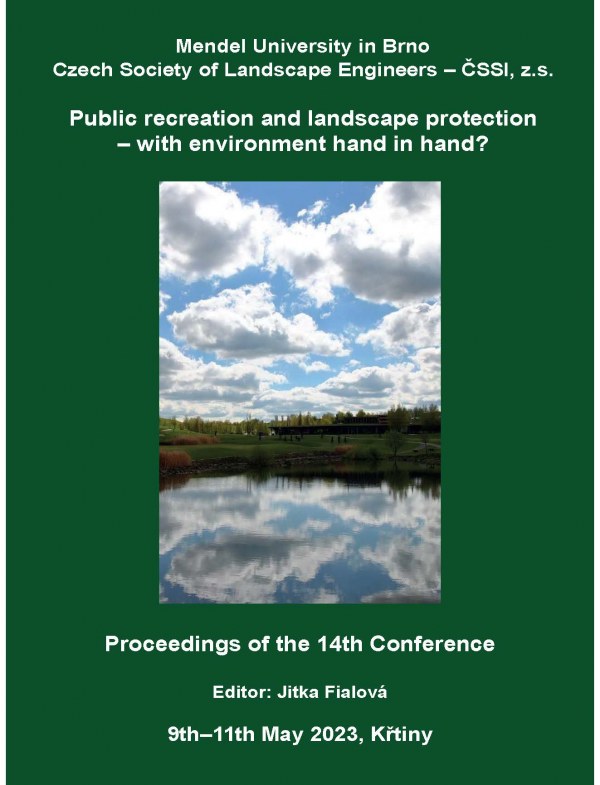
DOI: 10.11118/978-80-7509-904-4-0123
INTEGRATION OF NICHE AGRICULTURAL CROPS IN THE DEVELOPMENT OF ROMANIAN RURAL TOURISM. CASE STUDY: WALNUT CULTURE IN ROMANIA AFTER 1990
- Constantin-Răzvan Oprea, Roxana Cuculici, Iulian Săndulache
Studie se zabývá pěstováním ořechů v Rumunsku v období 1990-2021. Výzkum jsme považovali za užitečný, protože v posledních letech mělo Rumunsko významnou produkci na evropské úrovni. Ořešák vlašský je zákonem chráněný druh stromu, který má v rumunské krajině dávnou historii, odráží se v toponymii a je zmiňován ve středověkých dokumentech. Mnoho toponym v Rumunsku odráží souvislost s tímto stromem, včetně oikonym, z minulosti nebo současnosti: Nucu, Nuci, Nucet, Valea Nucetului, Nucșoara, Valea Nucarilor. To je známkou existence a rozvoje této kultury od pradávna. C. Giurăscu (1976) uvádí, že nuceturile z krajů Vâlcea, Dâmboviţa a Prahova jsou zmiňovány již v dávné minulosti. Nucetul z župy Vâlcea (zmiňovaný kolem roku 1400) dal první název současnému klášteru Cozia (v minulosti se nazýval Nucet), pak se změnil na Cozia, aby nebyl zaměňován s ořechem Dâmbovița, kde se nachází klášter Nucet, zmiňovaný listinně na konci XV. století. Výsledky této studie nakonec zdůraznily význam nikových plodin, jako je ořechová kultura, pro propagaci rumunských tradic a venkovské turistiky.
Klíčová slova: counties of Romania, Juglans trees, diachronic analysis, rural tourism
stránky: 123-129, Publikováno: 2023, online: 2023
Reference
- National Institute of Statistics. (2022). Tempo-online. Available at: http://statistici.insse.ro:8077/tempo-online/#/pages/tables/insse-table [Accesed: 10. 03. 2023].
- Sustainable Development Strategy for Romania. Available at: http://romania-durabila.gov.ro/ [Accesed: 15. 03. 2023].
- Sustainable Development Strategy for Romania, cap. Objective 11: Sustainable Cities and Communities. Available at: https://dezvoltaredurabila.gov.ro/web/odd-11-orase-si-comunitatidurabile/ [Accesed: 10.03.2023].
- Gafar, M., Grigorovschi, M. (2004). Ghid de valorificare a Patrimoniului Rural, Editura Alfa, București, p. 72
- Silva News, Nucul comun. Available at: https://silvanews.ro/silvicultura/dendrologie/nuc-comun/ [Accesed: 12.02.2023].
- Law 348/2003, The Law of Fruit Growing, Available at: https://legislatie.just.ro/Public/DetaliiDocument/45273 [Accesed: 15.02.2023].
- Law 18/1991. Official Gazette No. 1 of 5 January; Bucharest, Romania, 1998. Available at: https://www.global-regulation.com/translation/romania/3070086/law-no.-18-of-19-february-1991-landfund.html [Accessed: 12. 1. 2023].
- Vijulie, I., Lequeux-Dincă, A.-I., Preda, M., Mareci, A., Matei, E. (2022). Could Lavender Farming Go from a Niche Crop to a Suitable Solution for Romanian Small Farms? Land, MDPI. Available at: https://www.mdpi.com/2073-445X/11/5/662 [Accesed: 7. 02. 2023].
- Davis, J. R., Gaburici, A. (1999). Rural Finance and Private Farming in Romania, Europe - Asia Studies, 51(5), 843-969.
 Přejít k původnímu zdroji...
Přejít k původnímu zdroji... - Vasile, I. V., Luca-Vasile, R., Madoșă, E. (2021). Studies on the Variability of Morphological and Quality Characters in Saffron (Crocus Sativus). Current Trends in Natural Sciences, 10(19), 299-206.
 Přejít k původnímu zdroji...
Přejít k původnímu zdroji... - Gimbășanu, G. (2015), Agrișul, planta cu potențial să depășească zmeurul și coacăzul ca profit din cultură. Agrișele se caută acum la export și aduc câștiguri de până la 20.000 euro la hectar, Agrointeligența [online]. Available at: https://agrointel.ro/33140/cum-se-cultiva-agrisele-profit-culturahectar/ [Accesed: 7.02.2023].
- Befu, D. (2015). Plantațiile de Goji în România. Mit sau o cultură cu real potențial productiv? Agrointeligența [online]. Available at: https://agrointel.ro/35670/plantatiile-de-goji-in-romania-mit-sau-ocultura-cu-real-potential-productiv/ [Accesed: 7. 02. 2023].
- Teo, D. (2022). Cultura de Paulownia - Va poate aduce 30.000 Euro pe hectar [online]. Available at: https://teostie.ro/cultura-de-paulownia/diverse/ [Accesed: 7.02.2023].
- Lozan, A. (2023). Pomicultura ecologică în România - cum se dezvoltă sectorul [online]. Available at: https://agrobiznes.ro/articole/pomicultura-ecologica-in-romania-cum-se-dezvolta-sectorul [Accesed: 7.02.2023].
- Giurăscu, C. (1976). Istoria pădurii românești din cele mai vechi timpuri până astăzi, Ediția a doua, revizuită și adăugită, Editura Ceres, București, p. 253.
- Mănăstirea Nucet, Nucet, județul Dâmbovița [online]. Available at: https://turistprinromania.com/2020/07/23/manastirea-nucet/ [Accesed: 27. 03. 2023].
- Mănăstirea Cozia. Prezentarea Mănăstirii [online]. Available at: http://cozia.arhiepiscopiaramnicului.ro/prezentarea-manastirii [Accesed: 27. 03. 2023].
- Mănăstirea Cozancea. Despre noi - obștea Mănăstirii Cozancea [online]. Available online: https://cozancea.mmb.ro/despre-noi-obstea-manastirii-cozancea [Accesed: 27. 03. 2023].
- Zaharia, A. (2021). Cultivă profitabil, Cat traieste un nuc si ce productii poate sa ofere [online]. Available at: https://cultivaprofitabil.ro/cat-traieste-un-nuc-si-ce-productii-poate-sa-ofere/ [Accesed: 27. 03. 2023].
- Ministry of Agriculture and Rural Development. (2023). Trees, fruit bushes, strawberries - Practical Guide [online]. Available at: https://www.madr.ro/docs/agricultura/legume-fructe/Ghid-Pomicultura-final.pdf [Accesed: 27. 03. 2023].
- Biaplant. (2014). Nucul - este considerat regele pomilor [online]. Available at: https://www.biaplant.ro/articole/nucul-este-considerat-regele-pomilor-.html [Accesed: 27. 03. 2023].


